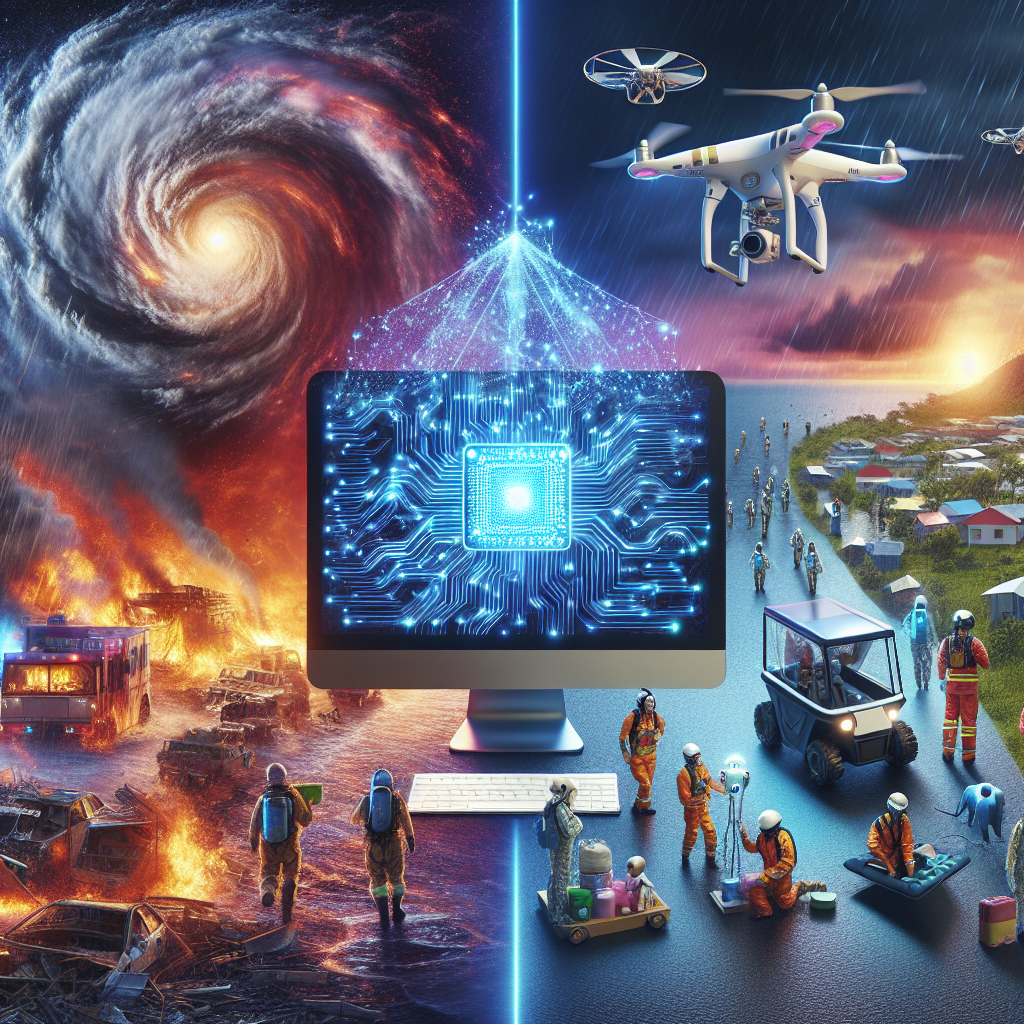In recent years, the use of artificial intelligence (AI) in disaster response and humanitarian aid efforts has become increasingly prevalent. From predicting natural disasters to coordinating rescue efforts and delivering aid to those in need, AI has the potential to revolutionize the way we respond to emergencies and provide assistance to communities in crisis. Leveraging AI for disaster response and humanitarian aid can lead to more efficient and effective interventions, ultimately saving lives and reducing the impact of disasters on vulnerable populations.
One of the key ways in which AI can be used in disaster response is through predictive modeling. By analyzing historical data on natural disasters, such as hurricanes, earthquakes, and wildfires, AI algorithms can help predict the likelihood and severity of future events. This allows emergency response teams to better prepare for disasters, evacuate at-risk populations, and allocate resources more effectively. For example, AI-powered models can predict the path of a hurricane and estimate the number of people likely to be affected, enabling authorities to make informed decisions about evacuation orders and emergency response plans.
In addition to predictive modeling, AI can also be used to coordinate rescue efforts during and after a disaster. For example, drones equipped with AI algorithms can be used to search for survivors in hard-to-reach areas or provide real-time aerial imagery to aid in rescue operations. AI-powered chatbots can also be deployed to provide information to affected populations, answer questions, and connect people with emergency services. By automating certain tasks and streamlining communication, AI can help emergency response teams work more efficiently and reach those in need more quickly.
Furthermore, AI can be used to analyze satellite imagery and other data sources to assess the extent of damage following a disaster. By using computer vision algorithms to identify damaged buildings, roads, and infrastructure, AI can help prioritize areas for rescue and recovery efforts. This information can also be used to estimate the economic impact of a disaster and guide decisions on where to allocate resources for reconstruction and rebuilding.
In the realm of humanitarian aid, AI can help optimize the delivery of assistance to those in need. By analyzing data on population demographics, food insecurity, and access to healthcare, AI algorithms can help aid organizations target their interventions more effectively. For example, AI can be used to predict where food shortages are likely to occur and coordinate the distribution of food aid to those most in need. Similarly, AI-powered healthcare systems can help identify areas with high disease prevalence and prioritize the delivery of medical supplies and services.
Overall, leveraging AI for disaster response and humanitarian aid can lead to more efficient and effective interventions, ultimately saving lives and reducing the impact of disasters on vulnerable populations. By harnessing the power of AI to predict, coordinate, and optimize responses to emergencies, we can better prepare for disasters, mitigate their effects, and provide assistance to those in need in a more timely and targeted manner.
FAQs:
Q: How can AI be used to predict natural disasters?
A: AI can analyze historical data on natural disasters, such as hurricanes, earthquakes, and wildfires, to develop predictive models that estimate the likelihood and severity of future events. By identifying patterns and trends in the data, AI algorithms can help predict when and where disasters are likely to occur, enabling emergency response teams to better prepare and allocate resources.
Q: How can AI help coordinate rescue efforts during a disaster?
A: AI-powered drones can be used to search for survivors in hard-to-reach areas or provide real-time aerial imagery to aid in rescue operations. AI-powered chatbots can also be deployed to provide information to affected populations, answer questions, and connect people with emergency services. By automating certain tasks and streamlining communication, AI can help emergency response teams work more efficiently and reach those in need more quickly.
Q: How can AI be used to assess the extent of damage following a disaster?
A: AI can analyze satellite imagery and other data sources to identify damaged buildings, roads, and infrastructure following a disaster. By using computer vision algorithms to assess the extent of damage, AI can help prioritize areas for rescue and recovery efforts and guide decisions on where to allocate resources for reconstruction and rebuilding.
Q: How can AI help optimize the delivery of humanitarian aid?
A: AI can analyze data on population demographics, food insecurity, and access to healthcare to help aid organizations target their interventions more effectively. By predicting where food shortages are likely to occur or identifying areas with high disease prevalence, AI algorithms can help prioritize the delivery of aid to those most in need and optimize the allocation of resources for humanitarian assistance.

